- Administrator
- Albums and Singles
Murmer
What Are The Roots That Clutch
Helen Scarsdale : HMS022 : CD
release date: July 3, 2012
It was a cavernous tone that broadcast from a ventilator duct that inspired Patrick McGinley to begin collecting field recordings and working them into his slow-arc compositions. At the time when he heard that particular tone in that particular city at that particular time, he had no gear to recording device on hand. Over the next fifteen years (and counting) McGinley has eased into a peripatetic lifestyle, wandering the European countryside and forests (but never straying too far from the thrum and spark of civilization) in search of the same epiphany with his head rattled to the sound of a cavernous air duct.
Around 1996, McGinley adopted the moniker Murmer for his compositional work; and though his work often steps into the quieter realm of sound construction, much of his field recordings and resultant compositions privilege interference and disturbances that occur within any given sound ecology. Those sounds could be the elusive tone from that ventilator, the polyrhythmic chorus of chirping frogs, the abstracted roar from an Arctic wind tearing across the Black Sea, or the metallic skree from a bowed antenna perched atop a Soviet-era observatory. What Are The Roots That Clutch marks McGinley's first full album in nearly 5 years, but it marks an elegant continuation of his previous album We Share A Shadow. The five chapters of this album can't easily be associated with any specific location; instead McGinley overlaps and crosshatches his field recordings and abstractions into acousmatic passages with ghostly, half-melodic qualities. Even the two unprocessed recordings of the album are impossibly complex in their accretions of sound. McGinley's composed pieces embrace lithe, mysterious drones whose mossy, damp atmosphere perfectly situate with tactile crunches, tactile events, and signal noise generation. Eels and leaches would not be out of place in such an environment; but the subaquatic murk snaps into a hallowed manifestation of ritualized minimalism at the album's finale/ -- one that LaMonte Young and Angus Maclise might have conjured in 1968 with clattering percussive elements and a hypnotic blur of harmonic drone.
What Are The Roots That Clutch is limited to 400 copies and comes housed with letterpress artwork.
+++++++++++++++++++++++
www.helenscarsdale.com
+++++++++++++++++++++++
HMS021: Jim Haynes The Decline Effect 2LP
HMS020: BJ Nilsen & Stilluppsteypa Big Shadow Montana LP
HMS019: RV Paintings Samoa Highway LP
HMS017: Spiracle Ananta 2CD
HMS016: irr. app. (ext.) Kreiselwelle CD
HMS015: Matt Shoemaker Erosion of the Analogous Eye CD
HMS014: Loren Chasse & Michael Northam The Otolith CD
HMS013: BJ Nilsen & Stilluppsteypa Passing Out CD
HMS012: Omit Interceptor 2CD
HMS011: Murmer We Share a Shadow CD
HMS010: Matt Shoemaker Spots in the Sun CD
HMS008: BJ Nilsen & Stilluppsteypa Drykkjuvisur Ohljodanna CD
HMS007: Waldron / Stapleton / Sigmarsson / Haynes / Faulhaber The Sleeping Moustache CD
HMS006: Spoonbender 1.1.1 Stereo Telepathy Academy CD
HMS005: Omit Tracer 2CD
HMS004: BJ Nilsen & Stilluppsteypa Vikinga Brennivin CD
HMS002: irr. app. (ext.) Ozeanische Gefühle CD
Read More
- Administrator
- Albums and Singles
 The first studio material recorded by KK Null and Seijiro Murayama in almost 20 years achieves a sonic symbiosis that’s both riveting and incendiary. While there are plenty of noisy electronics involved, they entertain rather than alienate on this chaotic yet warm recording.
The first studio material recorded by KK Null and Seijiro Murayama in almost 20 years achieves a sonic symbiosis that’s both riveting and incendiary. While there are plenty of noisy electronics involved, they entertain rather than alienate on this chaotic yet warm recording.
In a lot of ways, the percussion is the backbone of this album, providing a structural backdrop against which to better appreciate KK Null’s textural bag of tricks. Hums, drones, sci-fi sound effects, blistering roars, grinding machines, and haunted voices all erupt at different times and from different places in the audio spectrum.
"Metacompound G2A" is like the revving of some cumbersome machinery to warm its engine before launching into space. Halfway through the track, outer space is reached while disembodied voices offer constricted exhalations. Laser beams and loops arise to swamp the background, ending with echo blasts into a vast canyon. The drums come out more quickly in "Metacompound JK," grounding the track while a drone vacillates between two tones in a simulacrum of harmony and other electronics scramble for footing. A third of the way through the track, the drums collapse and deconstruct into a haphazard rhythm. The whole song is reduced to a minimal state momentarily before the percussion returns with a vengeance, pushing the electronics to the back while assuming the fore. Then the floor drops out suddenly to reveal broken glass and an echo chime effect. This is quickly overrun by a scrap heap loop that clears the way for the percussion to return yet again. The third and final track finds the drums gaining an even greater prominence. Aided by electronic percussion, they build a head of steam and run for the horizon, eventually stopping in favor of explosions.
Considering how many unexpected textures and rhythms pop up in the span of a single track, it’s hard not to like this album. The duo carves out a sonic palette that’s as electric and captivating as an approaching thunderstorm.
samples:
 
Read More
- Administrator
- Albums and Singles
 Uzeda uses razor wire guitar, bass that frequently takes the lead, and merciless drums to mold the perfect foundation from which to launch their unrelenting vocal attack. Restless and turbulent, the band thrives in a constant state of eruption.
Uzeda uses razor wire guitar, bass that frequently takes the lead, and merciless drums to mold the perfect foundation from which to launch their unrelenting vocal attack. Restless and turbulent, the band thrives in a constant state of eruption.
The guitar and vocals in particular separate the band from their influences. Giovanna Cacciola has a voice suited for these songs, whether lightly singing in the earlier sections of “Time Below Zero” or raising the volume with throaty howls on “Gold.” The guitar has a striking acidic tone as it explores frenzied dissonance or emphasizes the rhythm. It rarely functions as a melodic lead, instead providing a rhythmic counterpoint or an articulation of mood. The rhythm section deserves their fair share of the credit as well. For instance, their steadiness on “This Heat” provides the other band members with the freedom to wander on top of the music regardless of meter, a juxtaposition that goes a long way toward fueling the band’s vitality. Similarly, they smolder on “From the Book of Skies” and “Camillo,” allowing Cacciola to build the drama and then unleash herself in cathartic endings.
The only flaw, albeit a minor one, is that Steve Albini’s handling of the material immediately places them alongside any number of similar bands he’s recorded. That’s not necessarily a bad thing, either, because the production is gorgeous, but it does place them into a certain category right away that makes comparisons difficult to resist. Yet the band holds up favorably even if such comparisons are made. Their songs are dynamic and varied, and the singer’s powerful voice keeps the album consistently engaging. Building tension with a rare expertise, they are always ready to explode.
samples:
Read More
- Administrator
- Albums and Singles
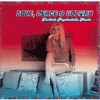 After the Asian volume a few years back, Ididn’t expect further investigation of Eastern psych currents, but I’m happy tobe proved wrong by the series’ tireless curator, Thomas Hartlage, who’sproduced another absolutely solid collection of lost psych brilliance.
After the Asian volume a few years back, Ididn’t expect further investigation of Eastern psych currents, but I’m happy tobe proved wrong by the series’ tireless curator, Thomas Hartlage, who’sproduced another absolutely solid collection of lost psych brilliance. QDK Media
This is number nine in the ongoing and continually astoundingcompilation series, after last year’s African volume, Turkish likewise confirms the presence of another fertilepsychedelic scene lost to international obscurity. Several tracks, including a couple of my favorites by thestill-active master Erkin Koray and truly unclassifiable Moğollar, come frombands already included in the Asian volume but welcome here alongsidelesser-known and just as compelling artists. Like all of the Asian pysch I’ve heard, the Turkish variety is mostcompelling in the way the Western psychedelic rock archetype gets filteredthrough Eastern interpretation and augmented by local tradition.
Unlike Southeast Asian and Pacific Rim psych, which tends toeither ape Western styles to amusingly warped degrees or let the music run overinto the manic redirections of local pop music, Turkish psych achieves a leanercombination of styles. Almost everytrack here (save three or four) favors the clipped, driving psych sound of thepopular West, with elements of Turkish folk (türkü) entering only with thevocal or the leading melodic line, usually guitar or traditional stringedinstruments (saz, sitar, bouzouki).
Strangely, these songs tend not to drift into the freak-outsor heady textures that I associate with Middle Eastern or South Asian music’spreoccupation with transcendental states. (Perhaps this is more evidence of reactionary tendencies in the scene,or just the fallacy of my Western ear.) Adherence to the Western pop format is, forthe most part, uniform, but this is never a deterrent. Hearing the beautiful Eastern lilts andintervals jostled within the fiery shuffle of Western psych breakdowns isinvigorating for both, creating an urgency and timelessness that is alwaysperfectly recovered on these comps, but really comes screaming out here, as onthe Mexican volume.
Yes, there are always exceptions, and with Love, Peace, & Poetry,they’re oftenthe best parts. On the previous Asianvolume, Moğollar laid down a Durutti Column-esque bliss-out of pluckedguitarand ocean ambience; here they drop the Eastern funk, the dreamy, firmEasternfunk, like Sun City Girls, except sober and enlightened, with a sweatyorgan--brilliant. Moğollar truly has a unique sound, dubbed‘Anadolu Pop’ upon its release and well worth checking out infull-album form,some of which are available through Shadoks and World Psychedelialabels. My favorites from this volume, however, arethe two tracks from Selda: ragged raga jams, over-blasted and tight ashell (strangeto hear these melodies with such makeup), with a female vocalist whosoundslike a combination of Grace Slick and one of today’s throaty,art-damagedpunkers.
samples:
- Magollar - Halicite Gunesin Batisi
- Edip Akbayram - Yakar Incenden Incenden
- Selda - Ince Ince Bir Kar Yagar
Read More
- Administrator
- Albums and Singles
 The first solo outing of Julian Cope's Head Heritage webmastercould've come with the tinkling of nepotism's alarm bells, but insteadit brought out the ringing drones of doom. Drafting in Brain Donor'sDoggen, SUNN O)))'s Stephen O'Malley and Cope to help out Holy McGrailshows that it takes more than pagan chic and black clothing to craftclassic drone rock.
The first solo outing of Julian Cope's Head Heritage webmastercould've come with the tinkling of nepotism's alarm bells, but insteadit brought out the ringing drones of doom. Drafting in Brain Donor'sDoggen, SUNN O)))'s Stephen O'Malley and Cope to help out Holy McGrailshows that it takes more than pagan chic and black clothing to craftclassic drone rock.Head Heritage
For the last few years the creeping love affair with krautrock has beeninforming and warping heavy rock roots into a lengthy freeformavalanche of twenty minute songs. Holy McGrail avoids the well-wornobvious paths of evil hymns and straight psych sides adding outer spaceguitar and spacey synth work to his mix.
Beginning with the most obviously rock of all three pieces “LadyHolle,” the record starts out with a simple stand up beat which soontakes on extra twists and hits lifting itself into a sleeker rhythm. Itmay not the typical Cro-Magnon expected primal stomp but itsinstrumental ritetastic vibe keeps it heavy while adding a pop touch;this is white magic metal chugging over rushing ecstasy whistles.There’s a superfuzzmuff wash over the record and a rhythm guitar on theverge of warping under the static that comes off its self immolatingheat and burning organ waves. The glorious epic finish of guitar andsine wave breaks over the omnipresent hum of its own rise and fall.
The second track “'Quake Appeal” (running for an epic 28:51)favors rumbling cloud drones over any perceptible slowly creepingSabbath heaviosity. This central piece haemorrhages a feedback pulselike a bulging fish squeezing itself gulping for air. This inner spaceworld throbs with hesitating shelves of sound which clip and beginanew, a rash of scattering sub-pulses. A brief riff sinks in (possiblyfrom Cope) and drops out as clicks echo and wash quickly away like thelast sinking whispers of bloody fisted feedback.
The more unassuming cosmic closer “Ur-Cow” (at a much too short 19:59)is a glistening stellar wash of burnt out and birthing shooting stars.There are numerous bursts of night sky sounds which zip over theprolonged undertone of sea-like static as Stephen O’Malley performs histurn through the track with a bled dry subtly and moderate touch. Where“'Quake Appeal” is more confidently engaging on the first handful ofpasses, it’s the closer that shows McGrail’s ear for gradients of soundand blissed out white light beauty. It’s definitely a feat in itselfthat he’s managed to utterly sidestep the colossal shadow of Earth andtheir impersonators to create this debut.
samples:
Read More
- Administrator
- Albums and Singles
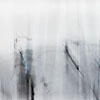 On their third release, this Norwegian duo of Jostein Dahl Gjelsvik and Rune Andre Sagevik continue to channel an organic warmth that would stick out so blatantly in their cold homeland, mixing unidentifiable sounds with bits of traditional sounding music. Tele sounds like the natural follow-up to 2010's Sval, fleshing out the concepts there with a greater sense of polish and experience.
On their third release, this Norwegian duo of Jostein Dahl Gjelsvik and Rune Andre Sagevik continue to channel an organic warmth that would stick out so blatantly in their cold homeland, mixing unidentifiable sounds with bits of traditional sounding music. Tele sounds like the natural follow-up to 2010's Sval, fleshing out the concepts there with a greater sense of polish and experience.
Some of the tracks on Tele are less about music but seemingly more about experimentation and sound art.The microscopic percussive fragments of "Fnugg" and textural pops of "Gnesis" exemplify this: while the former is too brief of a piece to develop much, the latter works in deep, bassy pulses and bellowing, horn-like sounds that are less about melody and more about collage."Flint" also resembles a layering of bizarre sounds and effects in a more experimental context, complex but not messy.The deep blurps of sound and slightly noisy leads stand out, however, giving it a slightly different quality.
Things differ on "Skifer," with its low thump and ambience almost resembling conventional music, which is only increased by what sounds like clanging guitar here and there. "Granitt," also, with its rhythmic almost synth-like line, feels more musical, despite the abstract sounds and layers around, resulting in a varied, yet consistent singular piece.
Everything is encapsulated in the closer "Polar," which opens with a barren, industrial hum and a distant, bellowing foghorn.For the first half it sticks mostly to the open-ended, abstract pastiches of sound until a clanging and metallic, but melodic sequence pops up, bringing some guitar with it.While it in no way sounds conventional, the guitar and melody comes together to end the piece (and the album) on a much more musical note.
If there is a weakness to this album, it is a minor one.There does not feel like a consistent theme or feeling that brings all nine of the tracks together, so it does not feel like it completely gels.Now, that is not to say that this comes across like a random collection of sounds or tracks, because that is not the case either.Instead it is in some middle ground, not disjointed, but not overly cohesive either.Tele nicely balances the worlds of abstract, deconstructed sounds of unknown origin with some actual, albeit subtle, concessions to music and melody.What it lacks in overall cohesiveness, it makes up for in consistency.
samples:
 
Read More
- Administrator
- Albums and Singles
 Since his emergence from self-imposed exile in the late 1990s, Maurizio Bianchi has become extremely prolific, and even more so in the past few years. Like other artists who release this volume of material, I have only dabbled here and there amongst his contemporary. The newer material is more in-line with the sound art and ambient worlds than his older MB material was to the then-burgeoning industrial and power electronics scene, and judged on its own merit, is quite good, as is this album here.
Since his emergence from self-imposed exile in the late 1990s, Maurizio Bianchi has become extremely prolific, and even more so in the past few years. Like other artists who release this volume of material, I have only dabbled here and there amongst his contemporary. The newer material is more in-line with the sound art and ambient worlds than his older MB material was to the then-burgeoning industrial and power electronics scene, and judged on its own merit, is quite good, as is this album here.
Celichants is his latest work, a single hour-long piece that, as near as I can tell, has little to do with Irish culture.Instead the piece is dedicated to Isadore Ducasse (aka Comte de Lautreamont). It features photo-cards of stone formations and an esoteric, likely cut-up surrealist text from Bianchi, illuminating nothing overtly about the album.
Consistent with his old MB releases, there is a huge amount of delay and reverb covering everything, in this case the most overt source material being the human voice, fragmented and masked as to only vaguely resemble its source.Occasional hints of conventional music seem to rise to the surface but just as quickly drift away into the murky space.At one point it almost sounds like bagpipes appear (or samples thereof), leading to the denser, heavier moments to be heard, and perhaps the Celtic part of the title.
While the first half has a distinctly cold, disconnected feel, the second half drifts into darker spaces, obscured by waves of sound that blur distant, unidentifiable noises.Even though there are a few hints at melody that come up, it mostly stays hidden and masked in the darker layers of effects and ambience.The closer is a bit more spacey and stereotypically electronic, with clattered crashes and bangs to end on a disjointed note.
I will admit, the work of Maurizio Bianchi does not grab me in the same way that the work as MB did in the early 1980s does.In all fairness, it is simply a change in approach and style rather than quality.The work Bianchi did as MB (Symphony for a Genocide, Menses, etc) was intentionally depressive and bleak, with a certain rawness that let it fit in nicely with the early noise and power electronics scene, though his contemporaries were far more angry and violent in comparison.His newer work is by no means all puppies and sunshine or trite new-agey dreck, but it does not have the same intensity as his older albums.
Celtichants is more in league with the work of Aube, with whom he has collaborated.There never is a specific feeling or emotion conveyed, just a deconstruction/reconstruction of sound, which he does very well.With his multitude of releases and collaborations, I can not speak to how this fits in overall, but those familiar with Bianchi's more recent work surely will not be disappointed, although they will not be surprised at what they hear either.
samples:
 
Read More
- Administrator
- Albums and Singles
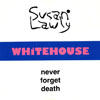 These two albums are two thirds of what I consider to be Whitehouse's most idiosyncratic, and therefore most compelling phase in their 26-plus years of activity. Culminating with 1995's Quality Time, which I have discussed at length before, the phase began here, with probably their most musical and understated (in relative terms, of course) works, respectively.
These two albums are two thirds of what I consider to be Whitehouse's most idiosyncratic, and therefore most compelling phase in their 26-plus years of activity. Culminating with 1995's Quality Time, which I have discussed at length before, the phase began here, with probably their most musical and understated (in relative terms, of course) works, respectively.
Quality Time was my initial exposure to Whitehouse, but by the time 1998's Mummy and Daddy was released, I had pretty much already digested much of their discography.Looking over their body of work, I see four distinct phases in their albums, from lyrics to vocals to the noises that which accompanies them.
The first phase, beginning with 1980's Birthdeath Experience up until 1983's legendary Right to Kill perhaps shows their greatest and most productive evolution.At that point, consisting of William Bennett and whomever he was acquainted with at that time (including Steve Stapleton for a few live performances), the band went from an atonal anomaly: in a modern context, Birthdeath Experience and Total Sex sound almost quaint; to a violent monstrosity:New Britain and Right to Kill are just as powerful and disturbing 30 years later.
The "second coming" as it was heralded at the time began with 1985's Great White Death and saw the band as a power trio of sorts:Bennett in the lead, backed by author Peter Sotos and Kevin Tomkins (then formally, and now once again currently of Sutcliffe Jugend).For better or worse, this is the album (and era) that they have been pigeonholed from:the once buried and inhumanly distorted vocals were brought up-front, coupled with lyrical content centered on aggressive, almost misogynistic sexuality.The sound and approach stayed rather consistent up through 1990's Thank Your Lucky Stars and 1992's Twice Is Not Enough, and seemed to edge into self-parody and humor at times: I have always had problems taking the David Tibet co-written title track from the former with any kind of seriousness.
Moving ahead, the fourth era is one of vicious digital noise that began with Mummy and Daddy and lasting through Asceticists 2006; eventually defined by untreated, but ranting, berating vocals traded off between Philip Best and William Bennett like two deranged psychotherapists to brilliant effect, and also a period of greater experimentation (sound collage, spoken word, percussion, etc).
Going backwards, the third period of Whitehouse is the more diverse, idiosyncratic one. The phase began with 1992's Never Forget Death, ostensibly a William Bennett solo album:the meticulous studio recording documentation on the Susan Lawly site credits no one else except him and Ott Blumenkraft, who mostly works in far more conventional genres, as a co-producer.Perhaps it was that co-production, because the three long tracks that make up the bulk of the album hint occasionally at traditional electronic music, for example:the undulating synths behind the title track eventually lock into some sort of perverse approach to techno.Maybe this was one of the earliest appearances of DJ Benetti and his love of Italo Disco.
Vocally, there a balance between the first two phases:lots of effects, but still mostly intelligible lyrics, with less of an emphasis on the sex and more on the violence."Now Is The Time" combines lyrics from "Right to Kill" with references to Bret Easton Ellis’ American Psycho…at least that is the only reason I can fathom Bennett name-checking Huey Lewis, Genesis, and Whitney Houston, atop a droning electronic backing that again exhibits an oddly rhythmic quality and an overall almost pleasant structure, barring the occasional harsh feedback swell.
The high point of the album for me is "Asking For It," which begins as a rather calm, narrative-like lyrical structure that devolves into hysterical, but menacing screams and harsh condemnations by the end.This is paired with an aggressive, but not overly noisy synth rhythm that varies and fluctuates perfectly with the vocals to come together beautifully.For all the criticism of their work, this ten minute piece alone is anything but just random noise with screaming:it is tightly and as effectively constructed as any post-whatever genre's stab at an epic-length song, and likely better.
The album's closer, "Torture Chamber" was marked with a disclaimer on both the original CD pressing and its current form (as the second half of the Twice Is Not Enough Special Edition disc) that it was not to be played loudly. While that seems almost comical for a Whitehouse album, one play through of the track justifies the warning.Beginning as a pure noise piece, more in line with Hijokaidan or the Incapacitants, the volume spikes to absurd proportions in the final 30 seconds, most likely into and far past the maximum threshold for digital media.
samples:
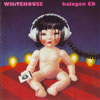
The subsequent follow-up, 1994's Halogen is both a return to the old and a new direction.Once again Bennett is assisted by Peter Sotos lyrically, resulting in some of the more complex vocal themes up to that point, while the synths are just awash in a sort of gauzy reverb that smooths out the cleaner sound, likely due to the Steve Albini production.It is still by no means peaceful, but has a more introspective feel compared to their other work.The almost pleasant synth sounds from Never Forget Death are but gone, replaced by unique analog textures that would reappear splendidly on Quality Time.
"Lightning Struck My Dick," despite its sophomoric title, delves lyrically much deeper, pulling in social commentary into the prostitution-tinged lyrics, and I assume with input from Sotos, given the wording is rather consistent with his writing.The vocals are pretty low and somewhat buried amid the ripping cloth synthesizers and explosions, but understandable.Similar is the title track, which opens with warbling feedback that, a few decibels lower, could actually be beautiful sounding.Even when the guttural, chugging synth and sampled Thai pop songs pop up, it is pretty placid.However, about half way through it takes a decidedly sinister turn.
Interspersed amongst these are a few straight up noise pieces, "Movement 1994" (a call-back to New Britain's "Movement 1982" and later revisited as "Movement 2000"), is a monochromatic burst of white noise, with little in the way of variation or dynamics that is short enough to not outstay its welcome."Dictator", on the other hand, is a low frequency synth throb with piercing noise stabs on top, and largely indecipherable vocals shouted throughout.
The most significant departure from not only the album, but their entire catalog, is the closing "The Way It Will Be." It is a brief, melancholy ambient track with poetic, spoken words:"I should like to live forever/Suns may rise, and suns may set/But you and I shall never more return to Earth."It is unlike anything else they ever did, or would do again, which is one of the reasons it is so striking.
Whitehouse is one of those few long-standing projects that I can pretty much jump into their back catalog at any point and enjoy on any given day.Personal preferences may shift depending on mood, but I do not find any album to be bad or weak by any means.The third phase trilogy (Never Forget Death, Halogen, and Quality Time) just always seems the most overlooked and under-appreciated to me, with so much of the focus on their career focused on either being among the first "noise" bands (the first phase), or their sexualized lyrics in the mid to late 1980s.I know before I heard the entirety of Quality Time, I had a lot of negative preconceived notions about the band that, once I actually listened to them, were tossed away.Anyone who has demonized Whitehouse based on second-hand information should listen for themselves and make up their own mind.
samples:
 
Read More
- Administrator
- Albums and Singles
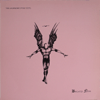 Over at their Bandcamp site, the Legendary Pink Dots are in the process of making available remasters of the ENTIRE catalog from the band's history. Right now the current focus is on the "main" albums, and the band has already made available Brighter Now, Curse, Faces in the Fire, The Golden Age, The Maria Dimension, and Shadow Weaver & Malachai.
Over at their Bandcamp site, the Legendary Pink Dots are in the process of making available remasters of the ENTIRE catalog from the band's history. Right now the current focus is on the "main" albums, and the band has already made available Brighter Now, Curse, Faces in the Fire, The Golden Age, The Maria Dimension, and Shadow Weaver & Malachai.
Edward Ka-Spel has informed us that "When we get to titles like Nemesis Online and 9 Lives To Wonder, we will include bonus LP-only material mastered from the original tapes. When we get to cassette releases, we will present them in the original versions," citing Chemical Playschool collections being restored to their original full length duration.
There is possibility that Tear Garden and other non-LPD projects may be included in the remastering project but the main LPD material is going to remain the focus for now.
Edward adds, "If compilations are eventually remastered we'll probably make them free downloads. Now off to my see my 2 sons in Nijmegen!"
To hear the available remasters as well as some other exclusive music, please visit http://legendarypinkdots1.bandcamp.com/
Read More


 (will be finished next week)
(will be finished next week)